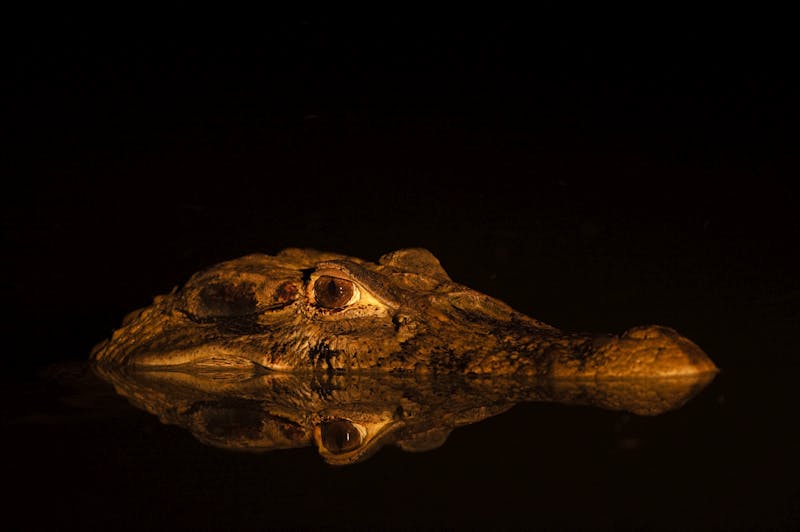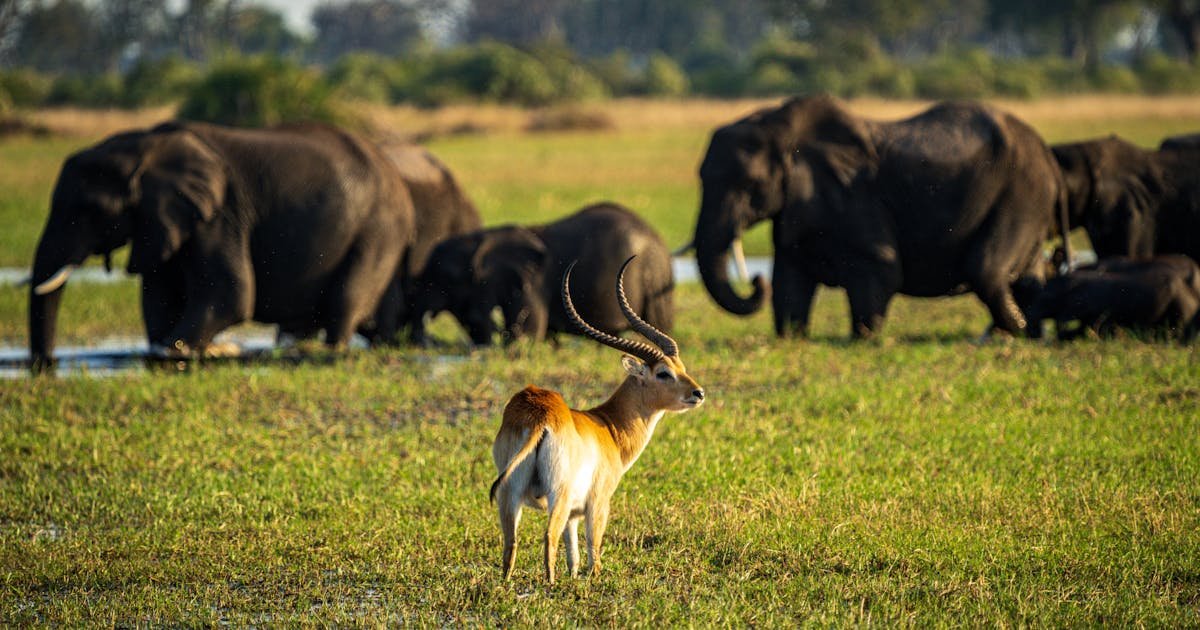Biodiversity is the variety and variability of life on Earth — and it is under serious threat.
More than 1 million species are at risk of extinction, by some estimates.
Most people know that biodiversity is important, but why is it important, exactly? What does biodiversity have to do with the health and well-being of our own species?
A lot, it turns out. In case you were wondering, here are five reasons why biodiversity is critical for us.
1. Wildlife supports the healthy ecosystems that we rely on.
Conservation researchers Paul R. and Anne Ehrlich posited in the 1980s that species are to ecosystems what rivets are to a plane’s wing. Losing one might not be a disaster, but each loss adds to the likelihood of a serious problem.
Whether in a village in the Amazon or a metropolis like Beijing, humans depend on the services ecosystems provide, such as fresh water, pollination, soil fertility and stability, food and medicine. Ecosystems weakened by the loss of biodiversity are less likely to deliver those services, especially given the needs of an ever-growing human population.
Take Topón in southern Mexico. About a decade ago, this small fishing community noticed that the shrimp on which its economy depended were dying off. The community suspected that climate change, increased deforestation and overfishing had pushed the ecosystem too far.
With help from Conservation International and local partners, the community was persuaded to turn to an unlikely ally: crocodiles. The movements of the reptiles, which are native to the area, stir up sediment at the bottom of the estuary. This aerates the water and boosts oxygen levels, while keeping minerals and nutrients from settling and clogging the system. When the community learned that hunting the crocodiles was harming their very way of life, they embraced their former foe. As a result, the estuary’s biodiversity began to rebound — and the shrimp catch has increased tenfold since the project began.
Read more: How a fearsome predator helped bring this community back to life
 © Pete Oxford
© Pete Oxford
In Madagascar, rich coastal ecosystems underpin the lives of more than half a million people. There, the Critical Ecosystem Partnership Fund, a multi-donor initiative co-led and hosted by Conservation International, has helped communities establish locally-managed marine areas to protect their waters from overfishing, climate change and other threats. This community-focused conservation puts Madagascar’s traditional fishers front and center — ensuring their livelihoods and way of life.
2. Keeping biodiverse ecosystems intact helps humans stay healthy.
Research indicates that there is a close link between disease outbreaks and the degradation of nature.
Seventy percent of emerging viral diseases have spread from animals to humans. In a recent analysis of disease data, scientists found that global trends like biodiversity loss, climate change, pollution and the rise in invasive species are putting humans, plants and animals at higher risk of contracting infectious diseases. When animals are driven from their habitats, and humans encroach deeper into undisturbed forests, the chances of a pathogen “spilling over” from wildlife to humans increases.
“We must fix our broken relationship with nature or we can likely expect another pandemic within a decade,” said Dr. Neil Vora, an epidemiologist at Conservation International who studies the links between nature protection and human health. “To do this, we need to stop virus spillover at its source, before new infectious diseases have a chance to trigger an outbreak — or even a full-blown pandemic.”
Just 10 percent of the world’s tropical forests hold more than half the global risk for zoonotic disease emergence, according to recent research co-authored by Conservation International experts.
Nature’s benefits for human health don’t end there: Research shows that protecting nature can slash malnutrition. A recent Conservation International study found that fish catches in coral reefs could increase by up to 20 percent by expanding sustainable-use marine protected areas — that is, areas where some fishing is allowed with restrictions.
Read more: In new TED talk, doctor prescribes conservation
3. Biodiversity is an essential part of the solution to climate change.
In a landmark study published in 2017, a group of scientists led by Bronson Griscom, who researches natural climate solutions at Conservation International, discovered that nature can deliver at least 30 percent of the emissions reductions needed by 2030 to prevent climate catastrophe. Protecting biodiversity plays a crucial part in achieving these emissions reductions.
The destruction of forests is responsible for 11 percent of all global greenhouse gas emissions caused by humans. Conserving forests prevents these gases from being released into the atmosphere. Trees and plants also store carbon in their tissue, making it even more necessary to protect them.
Some ecosystems, such as mangroves, are particularly good at storing carbon and keeping it out of the atmosphere. Forests and wetlands act as crucial buffers against extreme storms and flooding related to climate change. These complex ecosystems function best and are most resilient to climate change when their biodiversity is intact. To that end, experts are calling for the creation of protected areas aimed at conserving places with high concentrations of both climate-warming carbon and biodiversity.
Protecting a relatively small portion of land, according to Conservation International research, can secure the majority of what is called “irrecoverable” carbon — defined as carbon that, if emitted into the atmosphere, could not be re-absorbed by 2050. Researchers recently mapped this carbon, finding that it overlaps heavily with high concentrations of biodiversity, particularly in the tropics.
“Mobilizing resources to conserve these areas can have huge returns for the climate, biodiversity and human well-being,” said Monica Noon, a scientist at Conservation International and the study’s lead author.
Read more: These ecosystems could determine our climate future: study
 © Gustavo Carrasco
© Gustavo Carrasco
4. Biodiversity is good for the economy.
At least 40 percent of the world’s economy and 80 percent of the needs of the poor are derived from biological resources.
Altogether, the food, commercial forestry and ecotourism industries could lose US$ 338 billion per year if the loss of biodiversity continues at its current pace. Around 75 percent of global food crops rely on animals and insects such as bees to pollinate them, but many of these pollinator populations are in decline — which could put more than US$ 235 billion of agricultural products at risk.
Meanwhile The Economics of Ecosystems and Biodiversity (TEEB) initiative estimates that global sustainable business opportunities from investing in natural resources could be worth US$ 2 trillion to 6 trillion by 2050.
Millions of people also depend on nature and wildlife for their day-to-day livelihoods. This is particularly true for struggling communities in developing countries, who often turn to high-biodiversity ecosystems as a source of food, fuel and medicine — for their own use and for income.
Take Brazil nuts, for example.
In Suriname, one community’s economy is powered almost entirely by Brazil nuts. In 2017, residents in the remote village of Alalapadu decided to start harvesting and creating products from the nut, which grows in abundance in this northern corner of the Amazon basin. The Brazil nut tree (Bertholletia excelsa) tends to produce fruit only in wild, undisturbed forests. This means that it’s in the villagers’ interest to maintain the health of surrounding forests. Thanks to a little distribution support from partners (including Conservation International), the nuts and their oil are sold throughout the region for cosmetics and food products.
Zooming way out, consider something as vast as the world’s oceans, a global economic powerhouse: Commercial tuna fisheries alone contribute more than US$ 40 billion to the global economy every year and provide a disproportionately large percentage of annual revenue for many Pacific island nations. So protecting the ocean, while ensuring it continues to provide food and livelihoods for billions of people, is a delicate balancing act.
Read more: The ocean provides — and needs to be protected. Can humanity do both?
5. Biodiversity is an integral part of culture and identity.
Species are often integral to religious, cultural and national identities. All major religions include elements of nature and 231 species serve as national symbols in 142 countries. Unfortunately, more than one-third of those species are threatened — however, conservation efforts have succeeded in protecting the bald eagle and American bison because of their role as national symbols. Protected areas, such as national parks, also provide recreation and educational resources for visitors, and biodiversity is a frequent source of inspiration for artists and designers.
This is particularly true for Indigenous communities, who maintain deep spiritual connections with nature. Yet Indigenous Peoples and local communities have long lacked a seat at the table when it comes to the fashion industry. The result: Indigenous and local knowledge not included in corporate sustainability strategies; Indigenous intellectual property not respected; and the fashion industry’s impact on Indigenous Peoples and nature is generally overlooked.
A recently launched set of principles — informed by Indigenous people and local communities and led by Conservation International, in partnership with industry group Textile Exchange — is showing the industry how to meaningfully work with Indigenous Peoples and local communities while reducing the industry’s impact on them. The goal: Protection of the biodiversity that the fashion industry benefits from, and respect for Indigenous design.
 © Pete Oxford/ILCP
© Pete Oxford/ILCP
Further reading:
Julie Shaw is director of communications for the Critical Ecosystem Partnership Fund. CEPF is a joint initiative of l’Agence Française de Développement, Conservation International, the European Union, Fondation Hans Wilsdorf, the Global Environment Facility, the Government of Japan and the World Bank.
This post was originally published on Nov. 14, 2018. Bruno Vander Velde contributed to the report.


Recent Comments